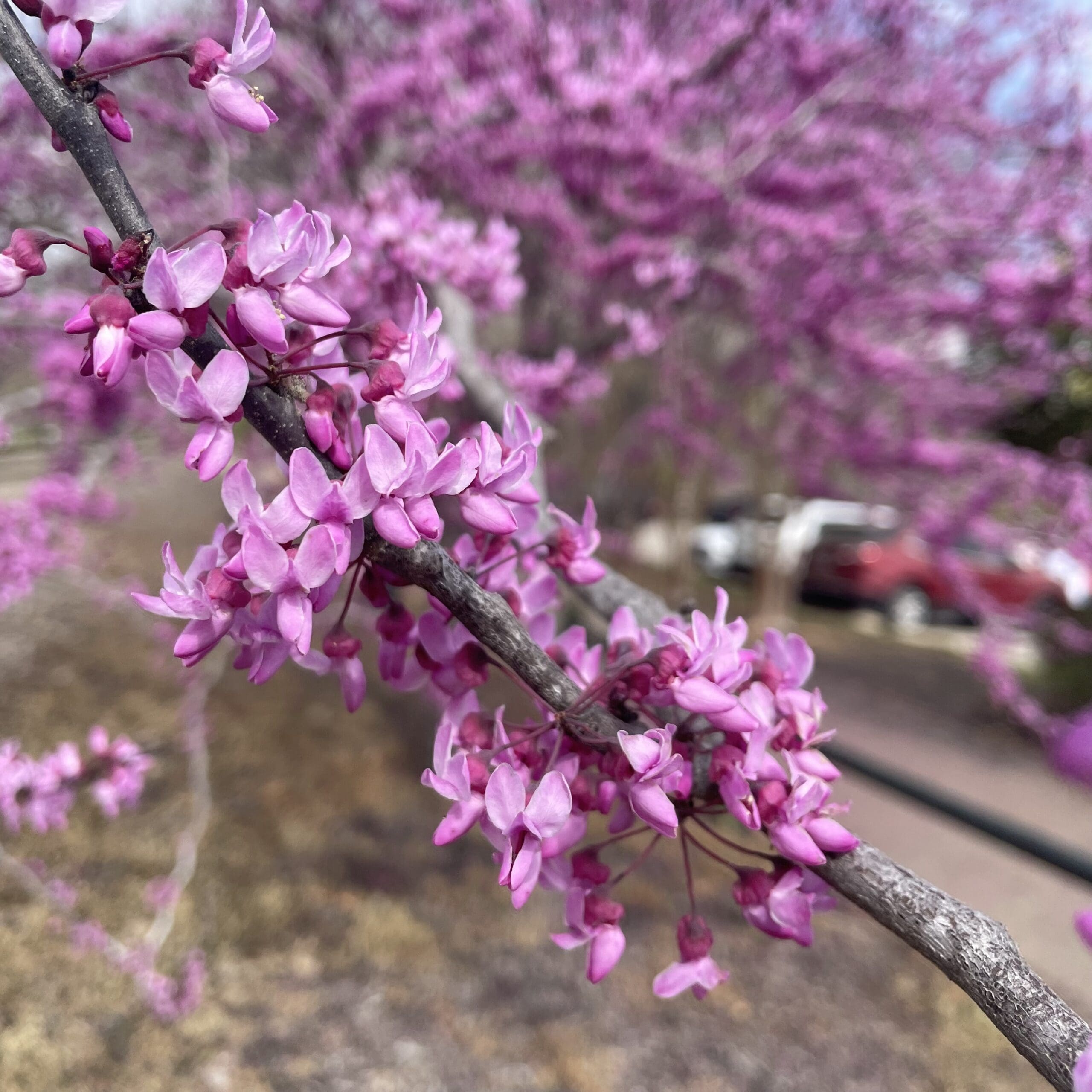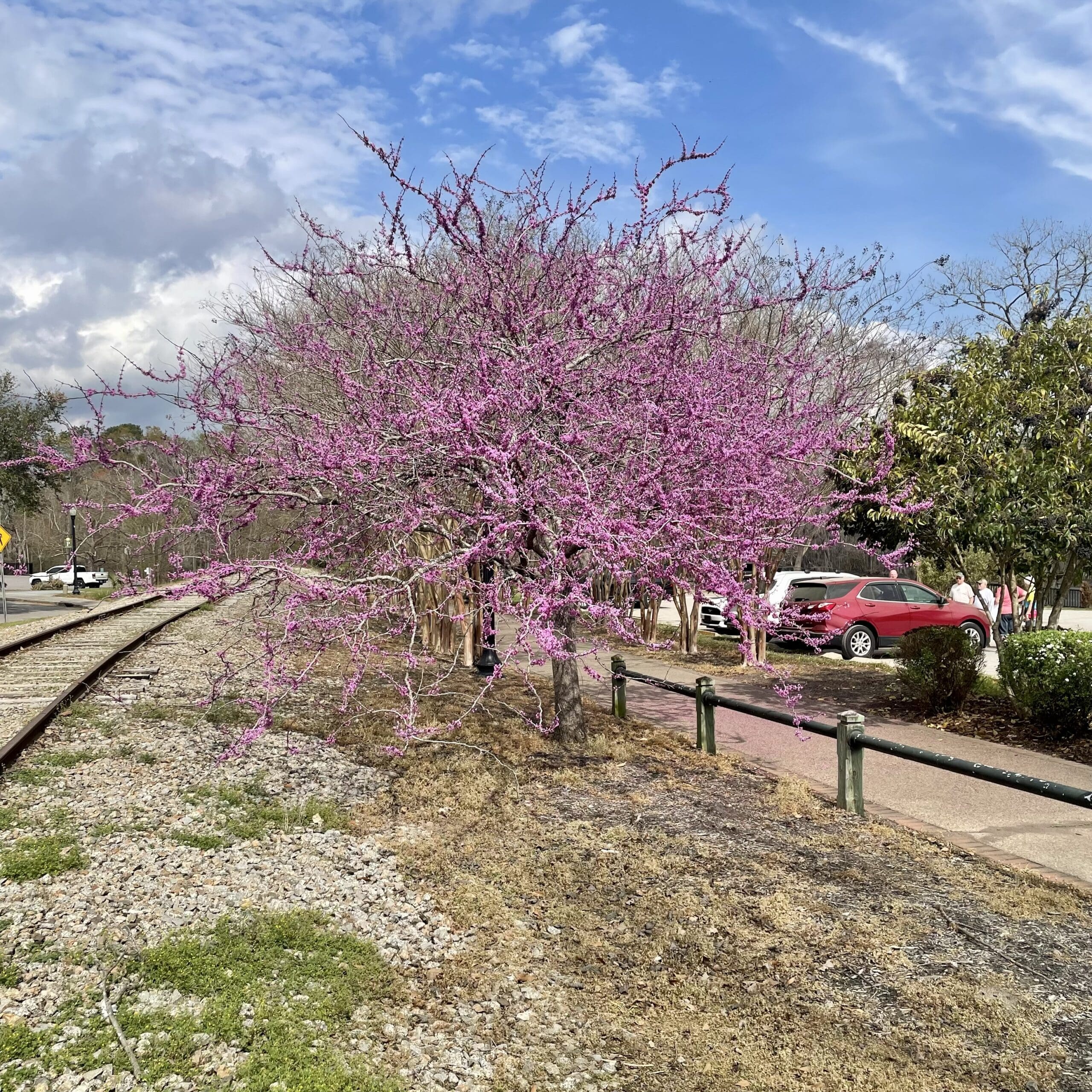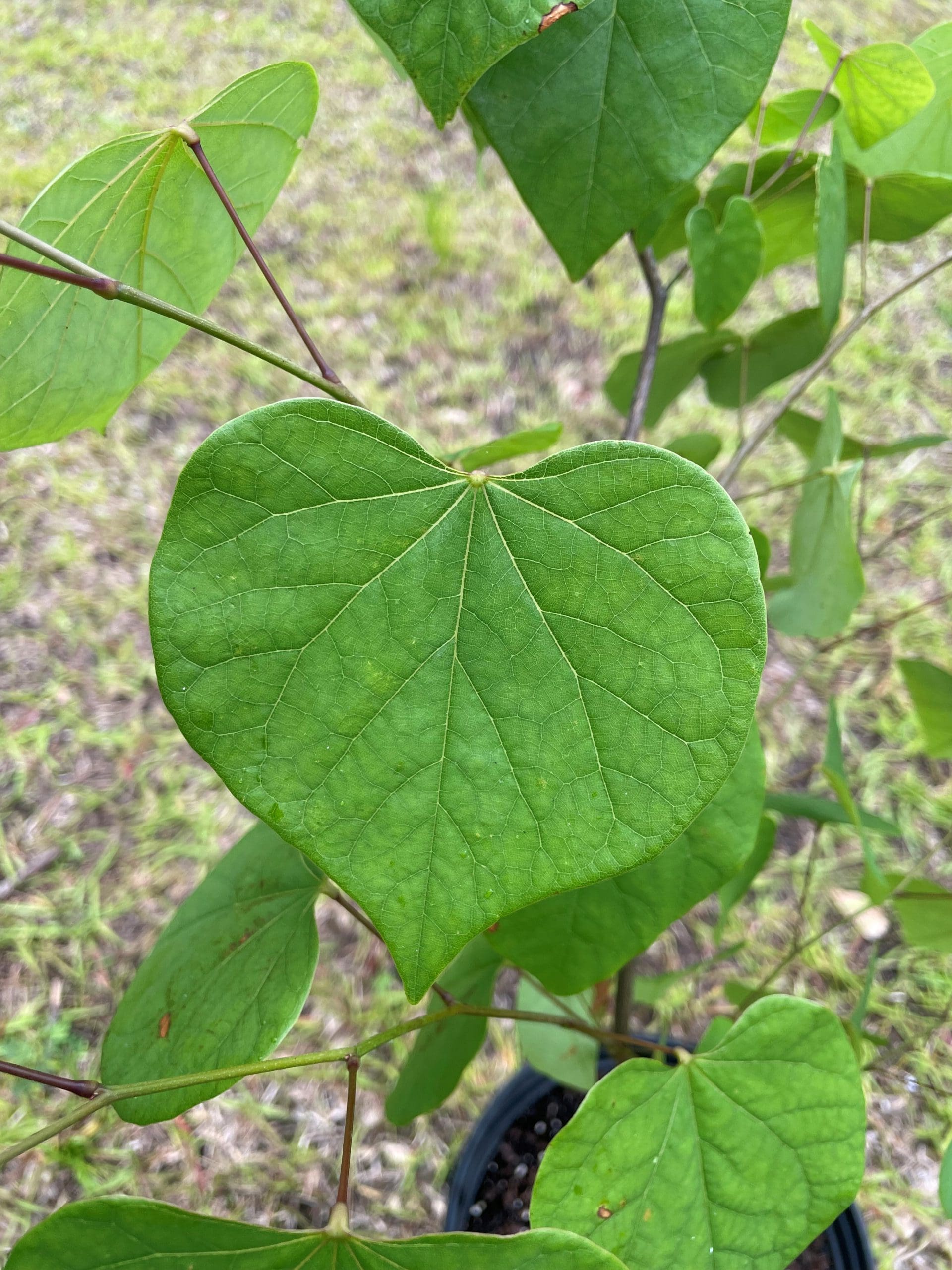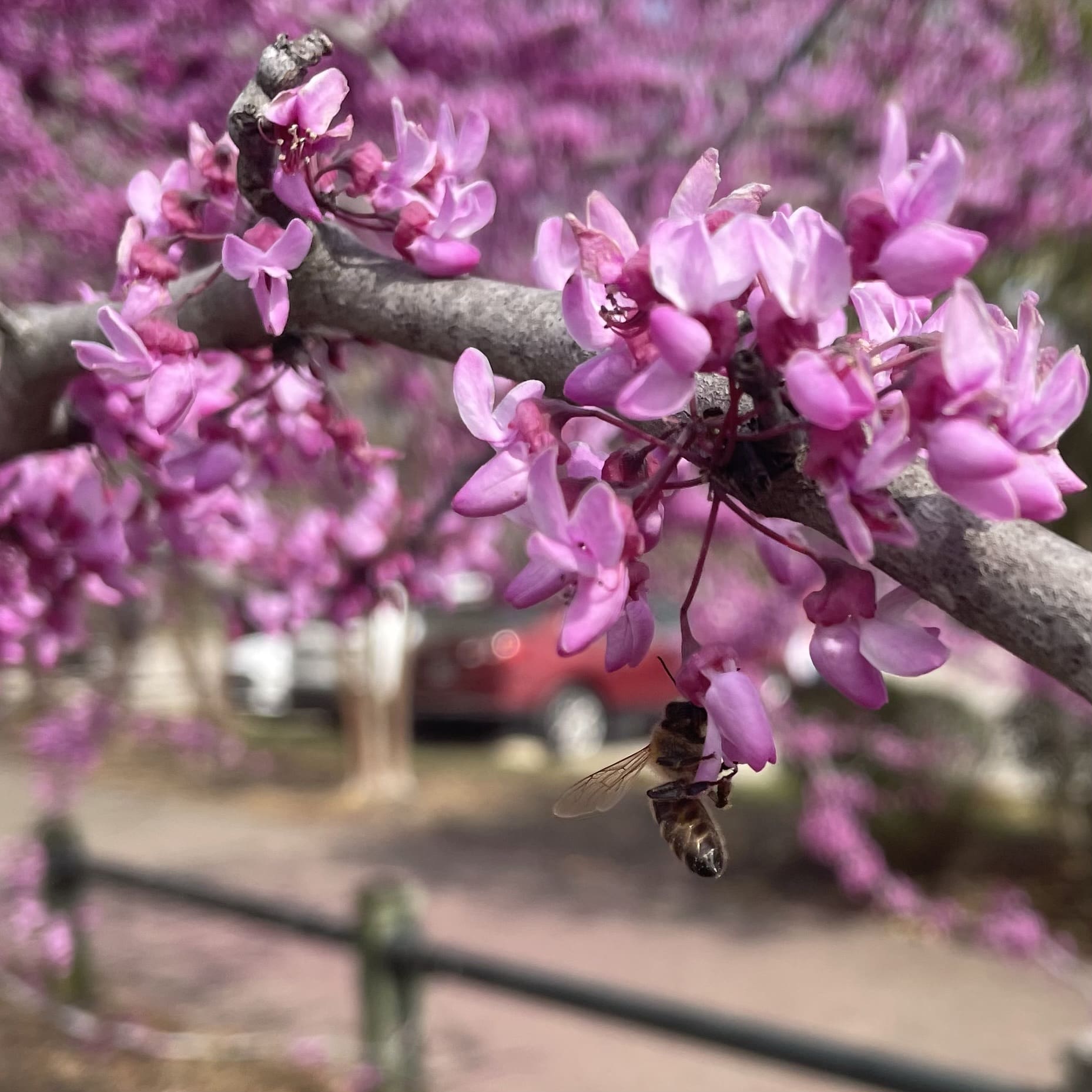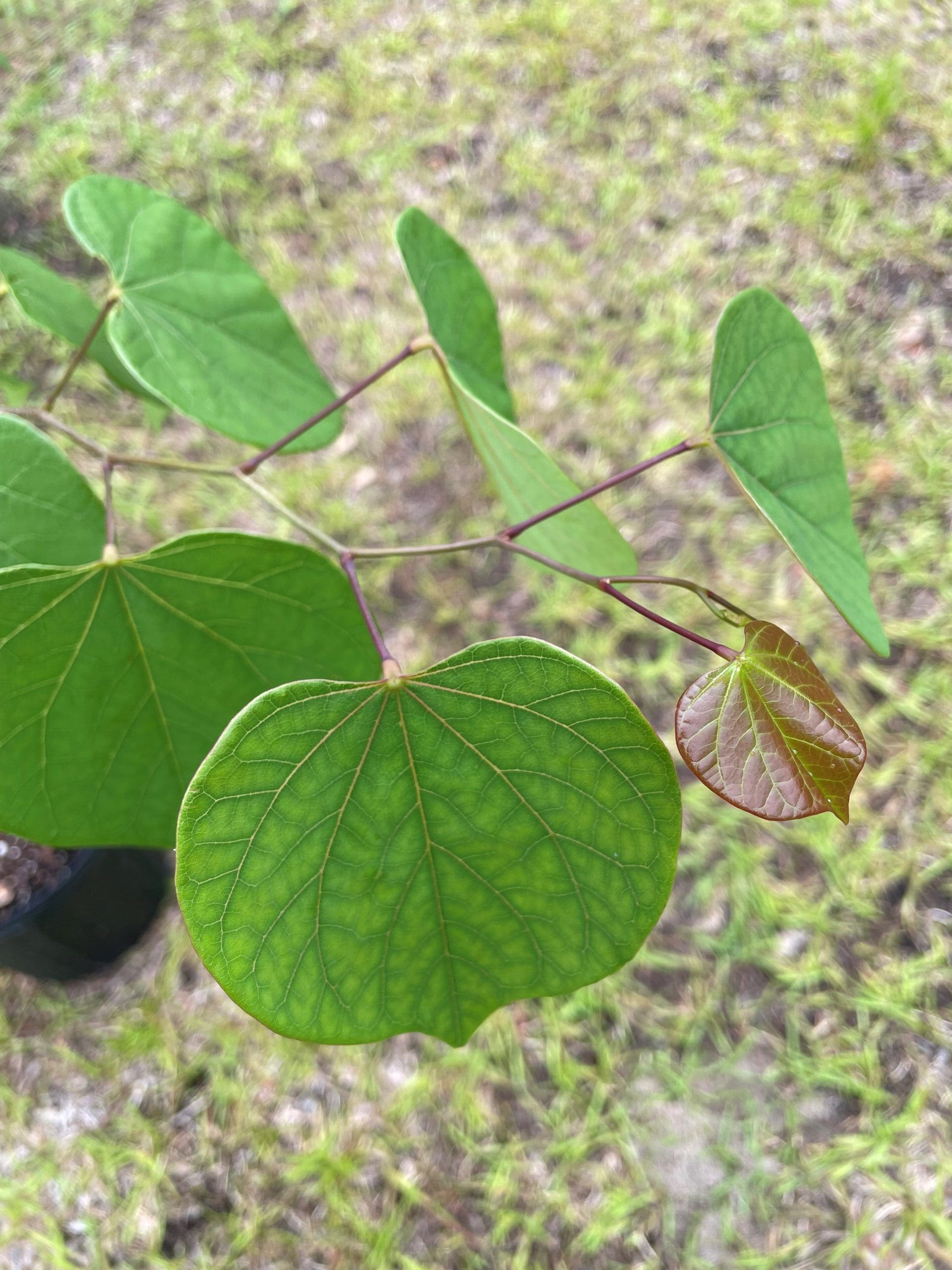Fabaceae
Eastern redbud
Cercis canadensis
Synonyms
Cercis dilatata
Cercis georgiana
Other Common Names
eastern redbud, American judas tree, American redbud
Plant Type
Small Tree/Large Shrub (10-25 ft)
Life Cycle
Perennial
Typical Size
Up to 30 ft. tall
20-35 ft. wide
Tolerant of
Deer
Inolerant of
Dry Soil
Propagation
By seed
Plant Propagation Notes
Collect seeds when they are dry and brown. Scarify seeds and plant outdoor in the fall. Requires cold stratification for 3-60 days.
Wildlife Benefits
Nectar/pollen source for pollinating insects, Host plant for butterfly larvae, Fruit/seeds for birds, Supports numerous caterpillars (bird food)
Leaves
Deciduous, simple, alternate, cordata (heart-shaped) leaves. Green in the summer, yellow in the fall. 3-5 inches long and wide.
Flowers
Showy pink blooms in the spring. Flowers before leaves return.
Fruit
Green fruit in the summer, fade to brown in the fall. Produces a legume seed pond containing around 9 seeds per mod. Ponds are 2-4 inches long.
Bark
Smooth, scaly dark brown bark.
Edibility
Flowers are edible and have a pea flower-like taste.
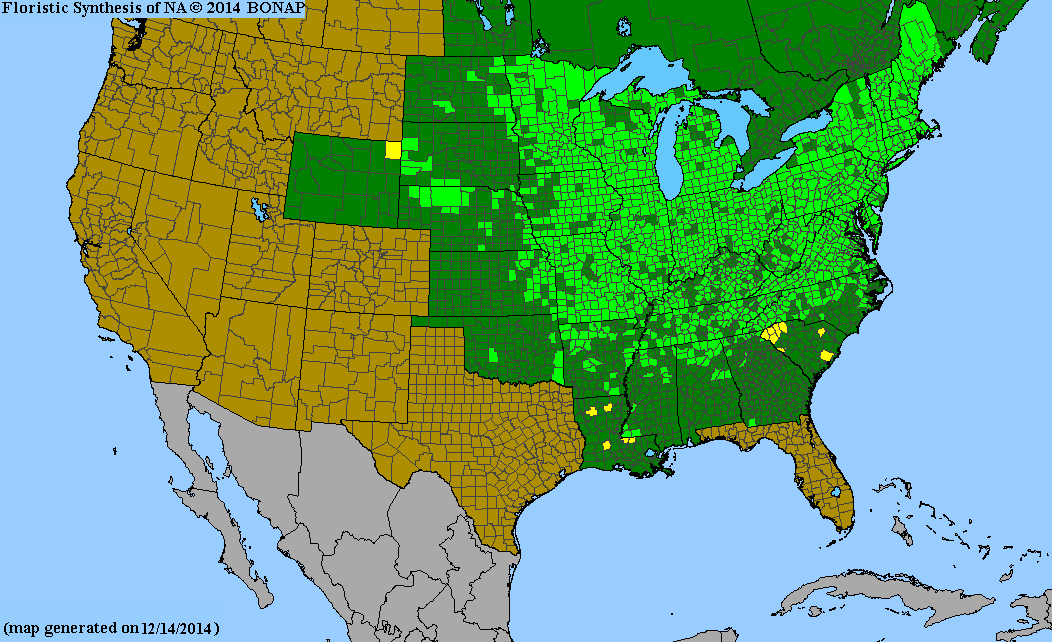
USDA Hardiness Zones
4, 5, 6, 7, 8, 9
Light Exposure
Full Sun, Part Sun/Shade
Soil Moisture
Medium, Moist
Soil Drainage
Well-drained
Soil pH
Acidic (less than 6.0), Neutral (6.0-8.0), Basic (greater than 8.0)
Native in South Carolina?
Yes
Plant Native Habitat
Woods, stream banks
Global Conservation Status (NatureServe)
Secure (G5)
Federal Conservation Status (USFWS)
Not Listed
Distribution Notes
AL , AR , CT , DC , DE , FL , GA , IA , IL , IN , KS , KY , LA , MA , MD , MI , MO , MS , NC , NE , NJ , NM , NY , OH , OK , PA , SC , TN , TX , VA , WV
Subspecies
Cercis canadensis var. canadensis, Cercis canadensis var. mexicana, Cercis canadensis var. texensis

